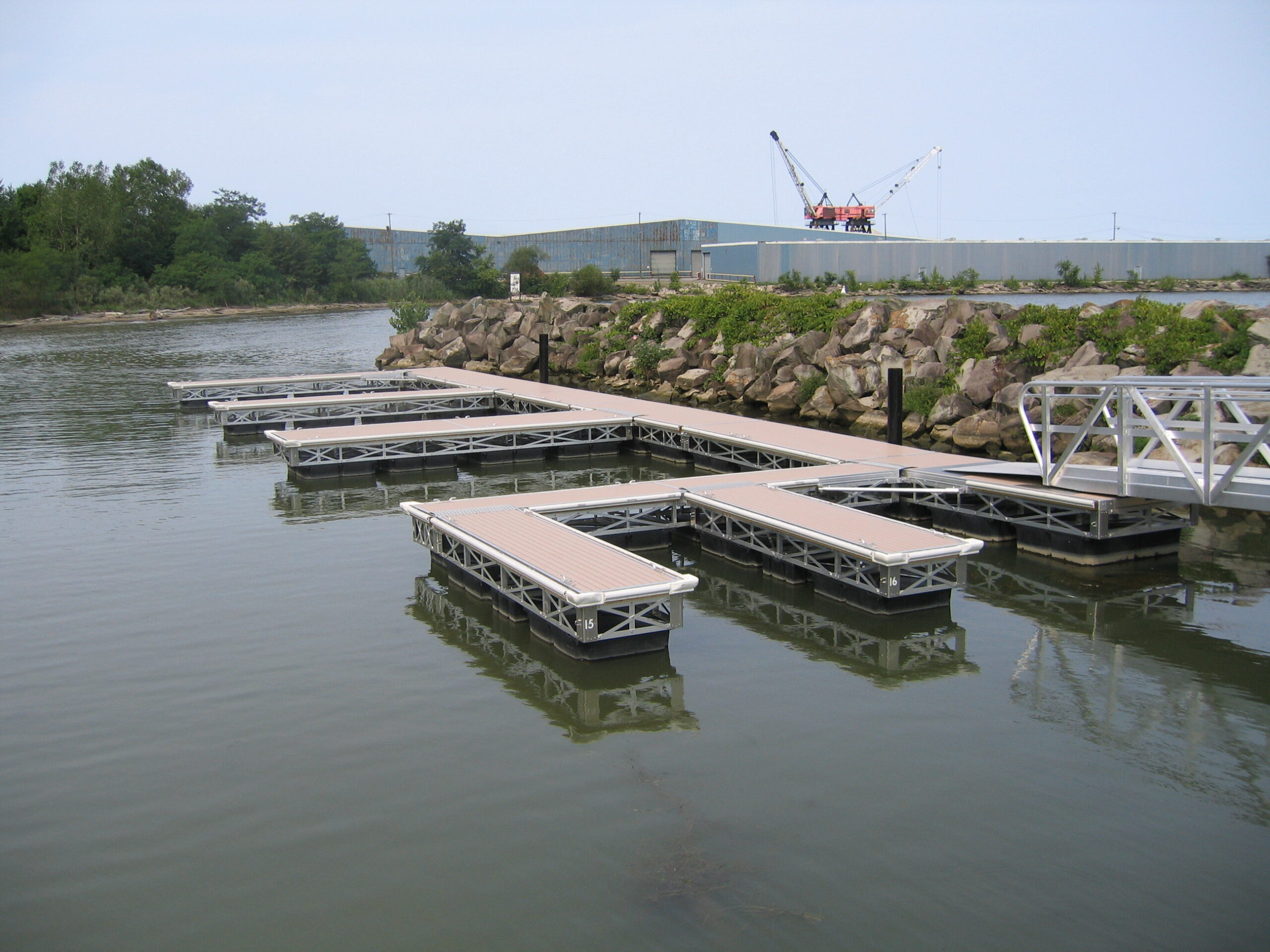Crafting Custom Solutions: Why a Floating Dock Builder is Important for Distinct Requirements
Crafting Custom Solutions: Why a Floating Dock Builder is Important for Distinct Requirements
Blog Article
Create the Perfect Docking Solution With Floating Docks
Floating docks present a versatile option for a selection of maritime demands, adapting seamlessly to changing water degrees and varied vessel types. Their modular nature permits quick setup and relocation, yet the option of suitable products and layout features is important for guaranteeing both capability and aesthetic charm. As we explore the vital components that add to the performance of floating docks, a number of crucial aspects relating to stability and maintenance will certainly emerge, elevating inquiries regarding how to optimize your docking experience. The subsequent conversation will brighten these vital factors to consider.

Advantages of Floating Docks
Floating docks offer many advantages that make them an excellent selection for various maritime applications. Unlike repaired docks, floating docks rise and fall with the trend, ensuring regular accessibility for vessels.
In addition, floating docks are usually much easier and quicker to set up compared to conventional set frameworks. Their modular style enables for straightforward assembly and disassembly, assisting in upkeep and moving when needed. This versatility is particularly useful for momentary applications or in environments where problems may transform.
Floating docks additionally tend to be much more eco-friendly, as they lessen disturbance to the seabed and bordering marine environments. Their buoyant nature decreases the risk of damages to marine life, advertising a healthier environment. These docks can be customized to fit different vessel sizes, guaranteeing that they meet specific operational demands.
Inevitably, the mix of versatility, ease of setup, and environmental factors to consider makes floating docks an extremely effective option for a vast array of maritime requirements.
Picking the Right Materials
Choosing the proper materials for floating docks is vital to guarantee sturdiness, security, and longevity. The option of materials directly influences the dock's performance in various environmental conditions, consisting of exposure to water, sunlight, and prospective wear from marine web traffic.
Usual materials used for floating docks consist of light weight aluminum, timber, and high-density polyethylene (HDPE) Light weight aluminum is light-weight, corrosion-resistant, and needs marginal upkeep, making it an excellent choice for longevity. Its first price can be greater contrasted to various other products.
Wood, while visually appealing and supplying a typical appearance, can be susceptible to rot and pest damages otherwise appropriately dealt with. Using pressure-treated wood or naturally sturdy species like cedar or redwood can reduce these concerns.
HDPE is a prominent choice because of its resistance to UV rays and chemicals, together with being ecologically pleasant. dock company. It is available and light-weight in different colors, allowing for modification
Eventually, the right product option will certainly depend upon certain demands, consisting of budget plan, wanted aesthetic appeals, and environmental factors to consider. Cautious assessment of these variables will bring about a resilient and successful floating dock service.
Layout Considerations for Security
When making floating docks, making sure security is a basic element that can dramatically influence their functionality and security. Stability in floating dock design is influenced by different aspects, consisting of buoyancy, weight circulation, and the setup of components.
Weight distribution is important; uniformly distributing tons throughout the dock protects against turning and improves security. This can be accomplished with tactical placement of docking equipment, such as fenders and cleats, as well as proper spacing of floats. In addition, the measurements of the dock need to be attentively prepared. Broader designs can offer increased stability, specifically in harsh water problems, while longer docks may need additional supports to stop drooping.
One more vital factor to consider is the ecological impact, including wave activity and wind. Including functions such as sidewalls or skirting can help mitigate the results of ecological forces, keeping stability in adverse conditions. Eventually, a combination of thoughtful layout, look at more info material choice, and understanding of environmental factors will certainly yield a floating dock that meets both security and safety needs.
Installation Tips and Strategies

Following, safeguard the necessary permits and follow local policies, which may dictate installation methods and environmental considerations. If required, involve a qualified specialist experienced in floating dock installations. Usage high-grade products created for marine environments to boost their website longevity and longevity.
When placing the dock, straighten it alongside the shoreline to assist in very easy gain access to. Ensure that the anchoring system is durable, employing concrete blocks or helical anchors to support the dock against wind and wave activity. It's critical to make up seasonal water level fluctuations, consisting of potential ice activity in chillier climates.
Throughout the installation, ascertain the dock's floatation and security before settling the anchoring. On a regular basis evaluate the installment for any kind of indications of floating dock builder wear or damages. By complying with these methods and pointers, you can accomplish a safe, practical, and cosmetically pleasing floating dock installment that meets your needs.
Maintenance and Care Standards
Caring and keeping for floating docks is important to prolonging their lifespan and making sure risk-free use. Routine assessments should be carried out to determine any kind of indicators of wear, damages, or marine development. Search for splits, loose fittings, or stained locations on the dock's surface, as these issues can compromise structural stability.
Cleaning is crucial. Utilize a stress washing machine to remove algae, barnacles, and debris, which can accumulate in time. For stubborn growth, take into consideration eco-friendly cleaning agents that won't damage water life.
In addition, examine the mooring lines and supports often to guarantee they are safe and free from deterioration. Change any kind of torn or damaged lines quickly to preserve security.
Throughout severe climate, such as tornados or freezing problems, take preventive procedures. Protect the dock with additional mooring lines and, if feasible, get rid of any kind of removable elements to avoid damages.
Verdict
In verdict, the application of floating docks presents a reliable and flexible docking solution appropriate for different maritime applications. Their adaptability to fluctuating water degrees, combined with a modular style, permits easy modification and relocation. Picking suitable products boosts both longevity and visual charm, while careful factor to consider of stability makes certain safety and security and long life. With proper installation and regular upkeep, floating docks can supply effective and dependable docking experiences for a large range of vessels.
As we discover the vital components that add to the effectiveness of floating docks, a number of vital factors relating to stability and maintenance will emerge, increasing concerns about how to enhance your docking experience. Unlike dealt with docks, floating docks surge and loss with the tide, guaranteeing constant availability for vessels.When making floating docks, making certain stability is a basic facet that can significantly affect their functionality and safety. Stability in floating dock style is influenced by various factors, including buoyancy, weight distribution, and the arrangement of components. Eventually, a mix of thoughtful style, product choice, and understanding of environmental aspects will produce a floating dock that meets both security and safety requirements.
Report this page